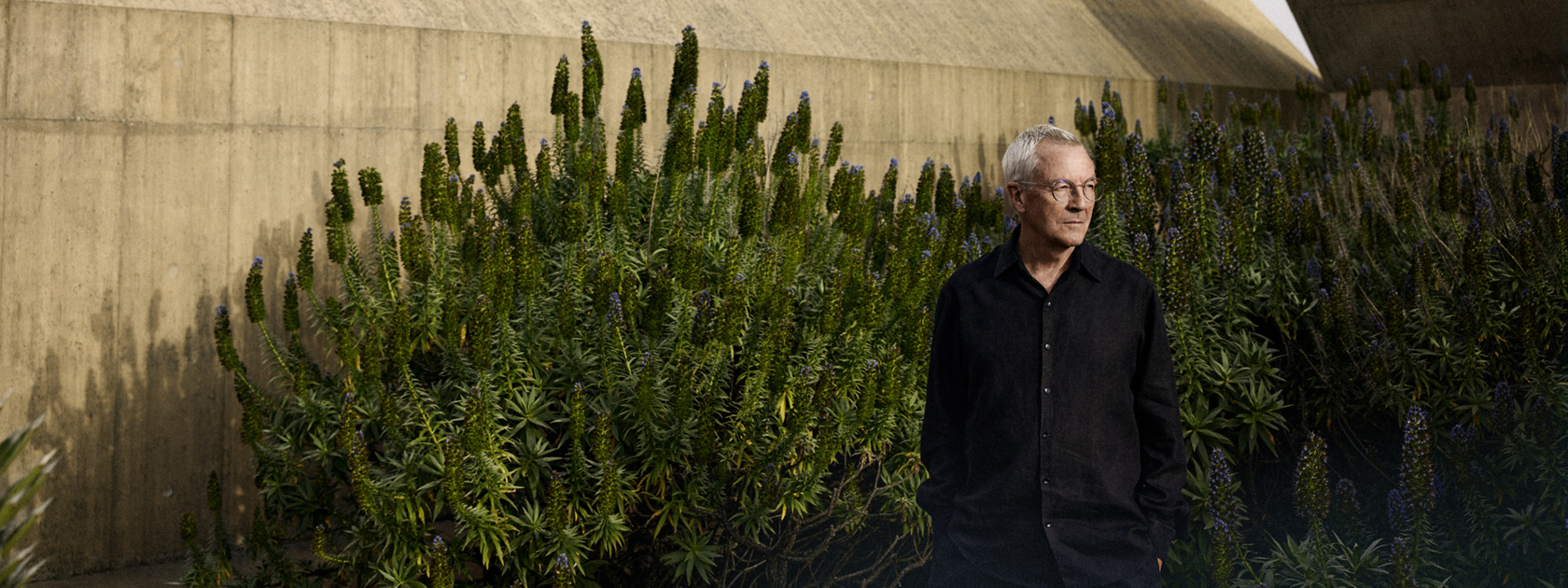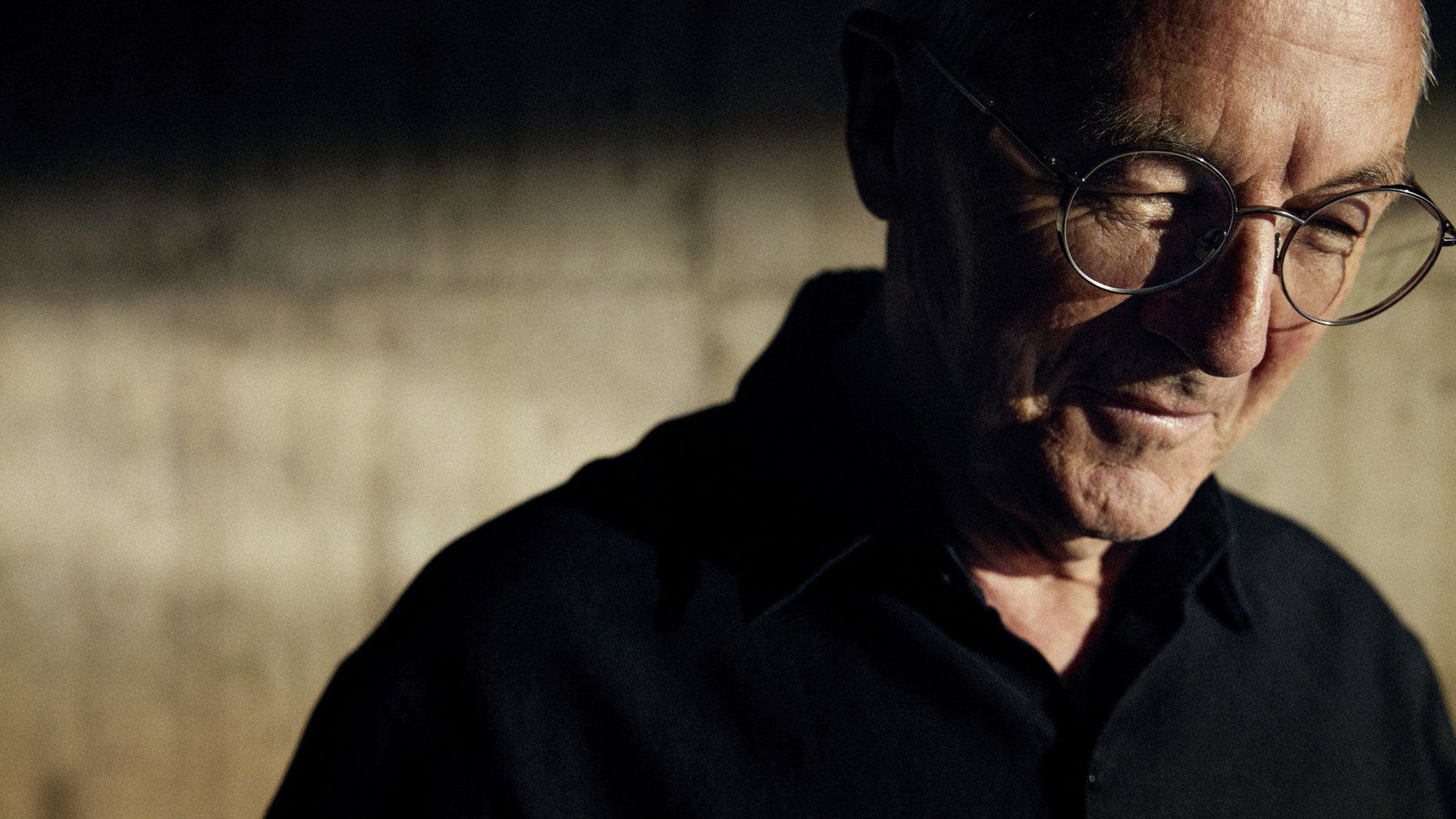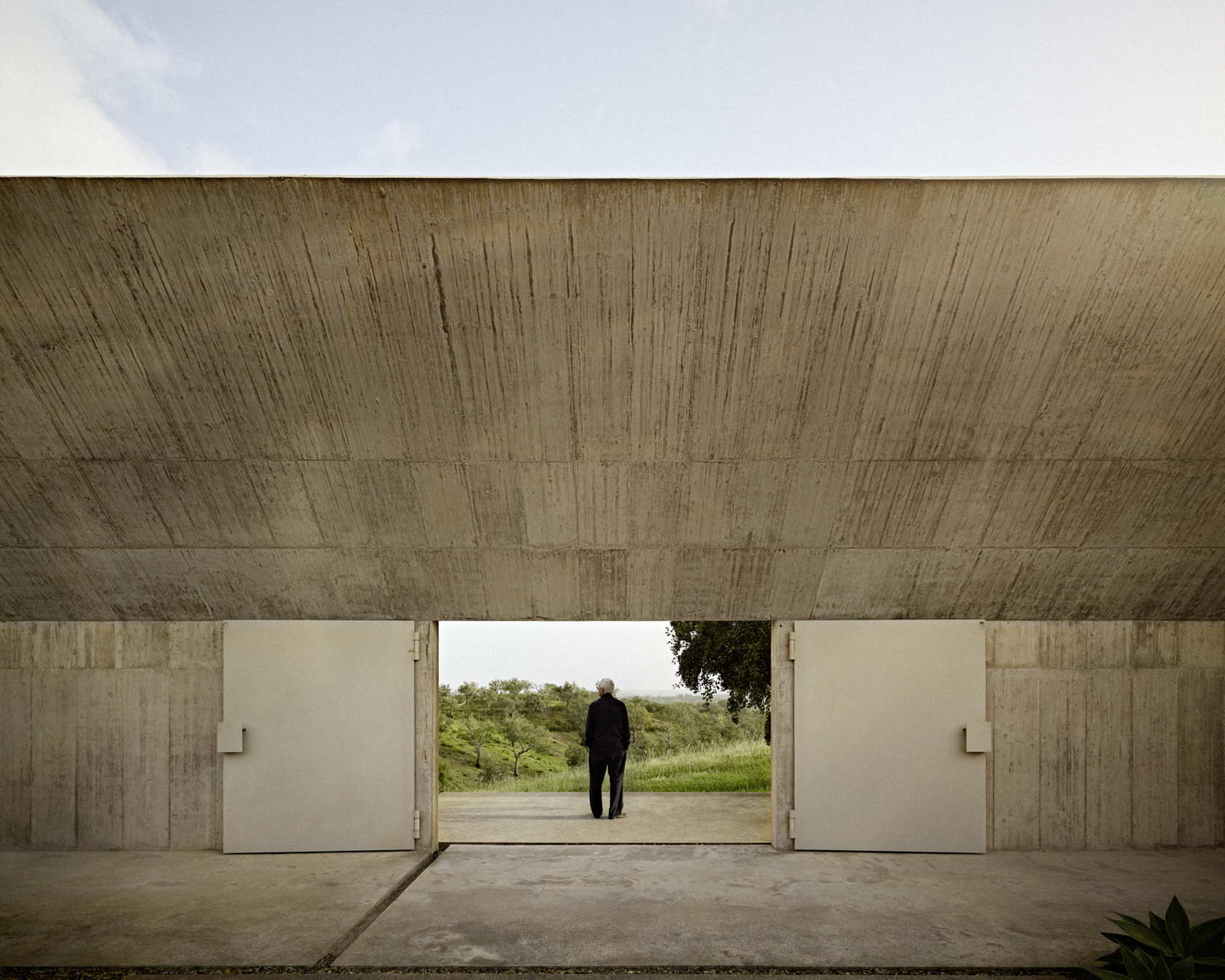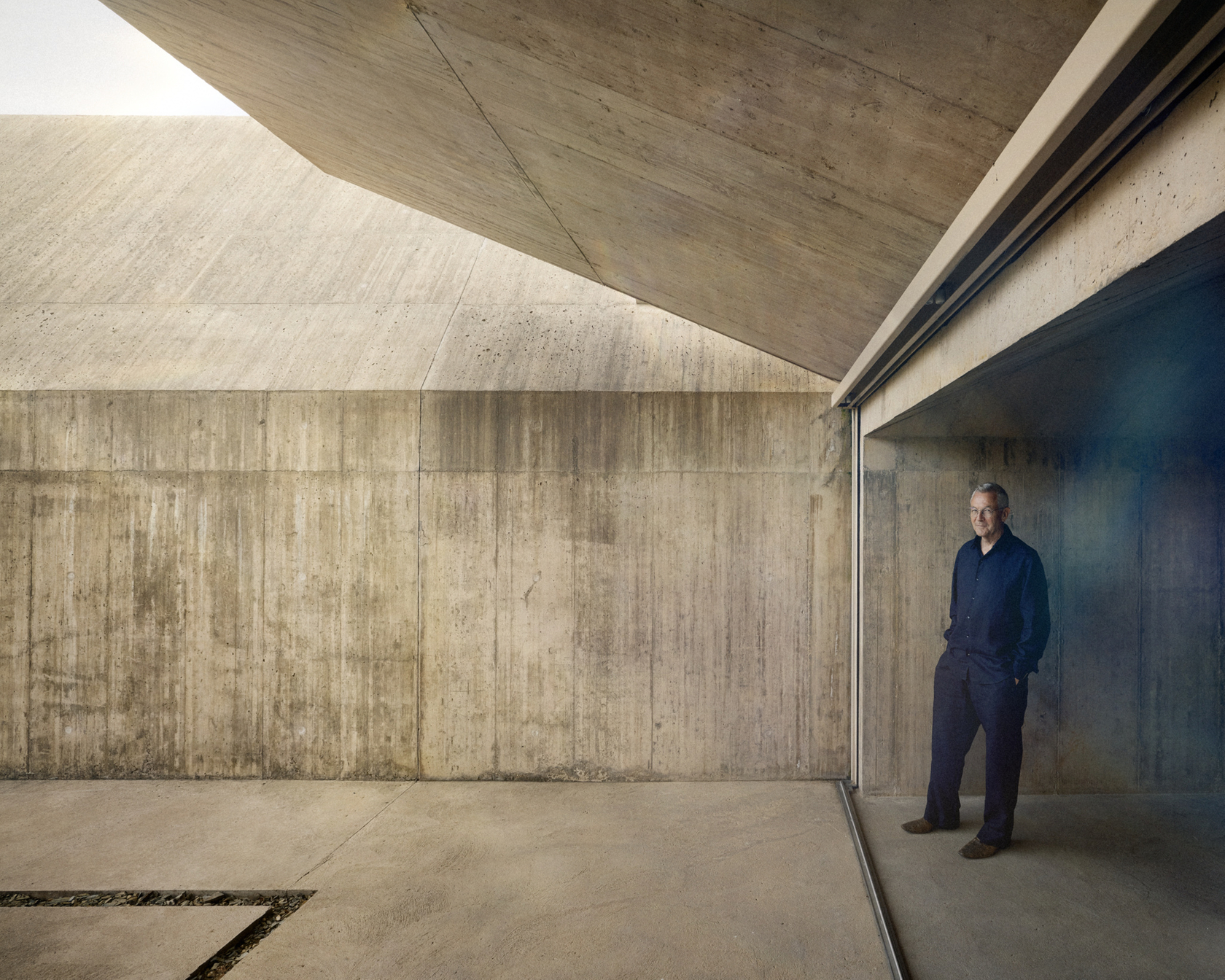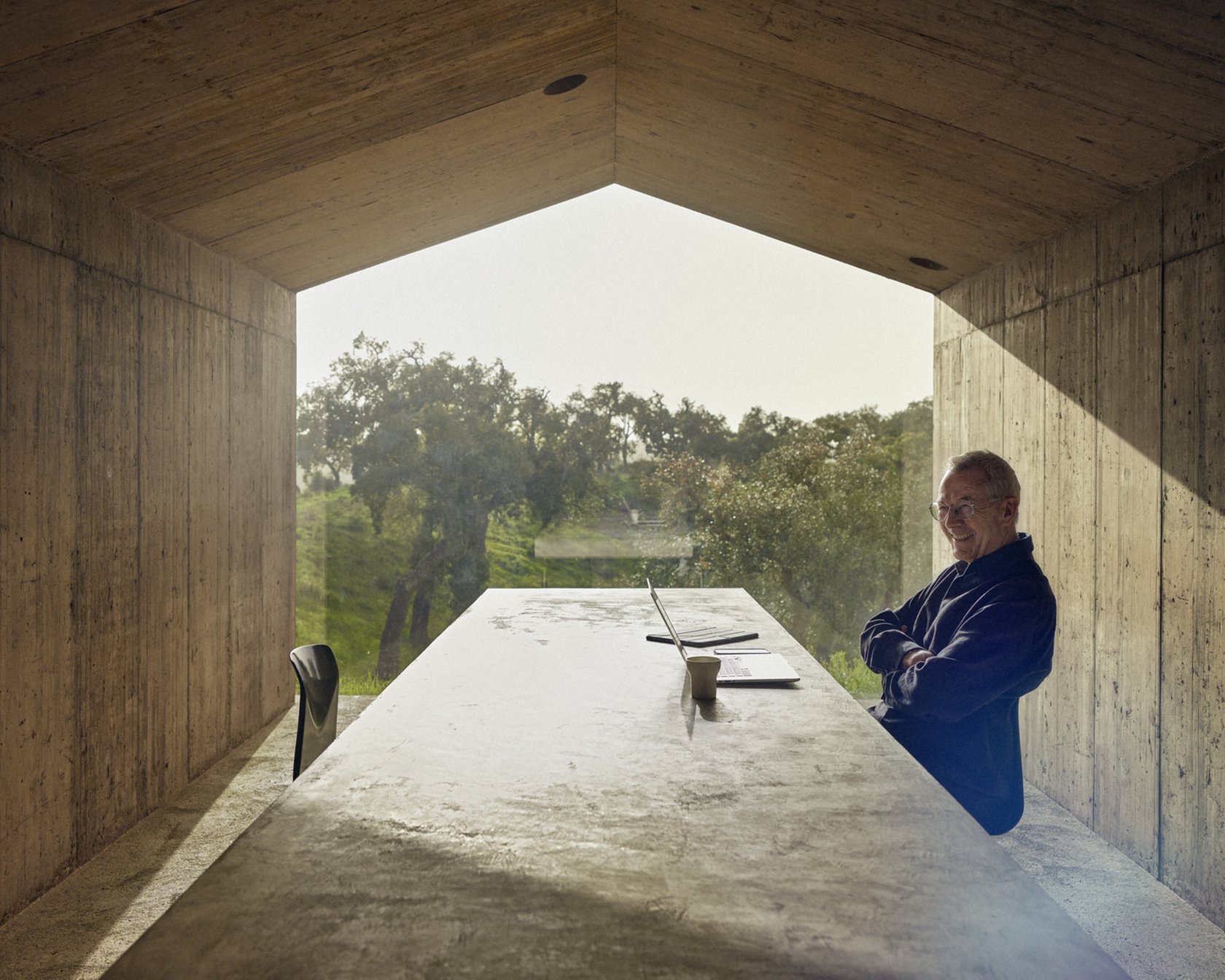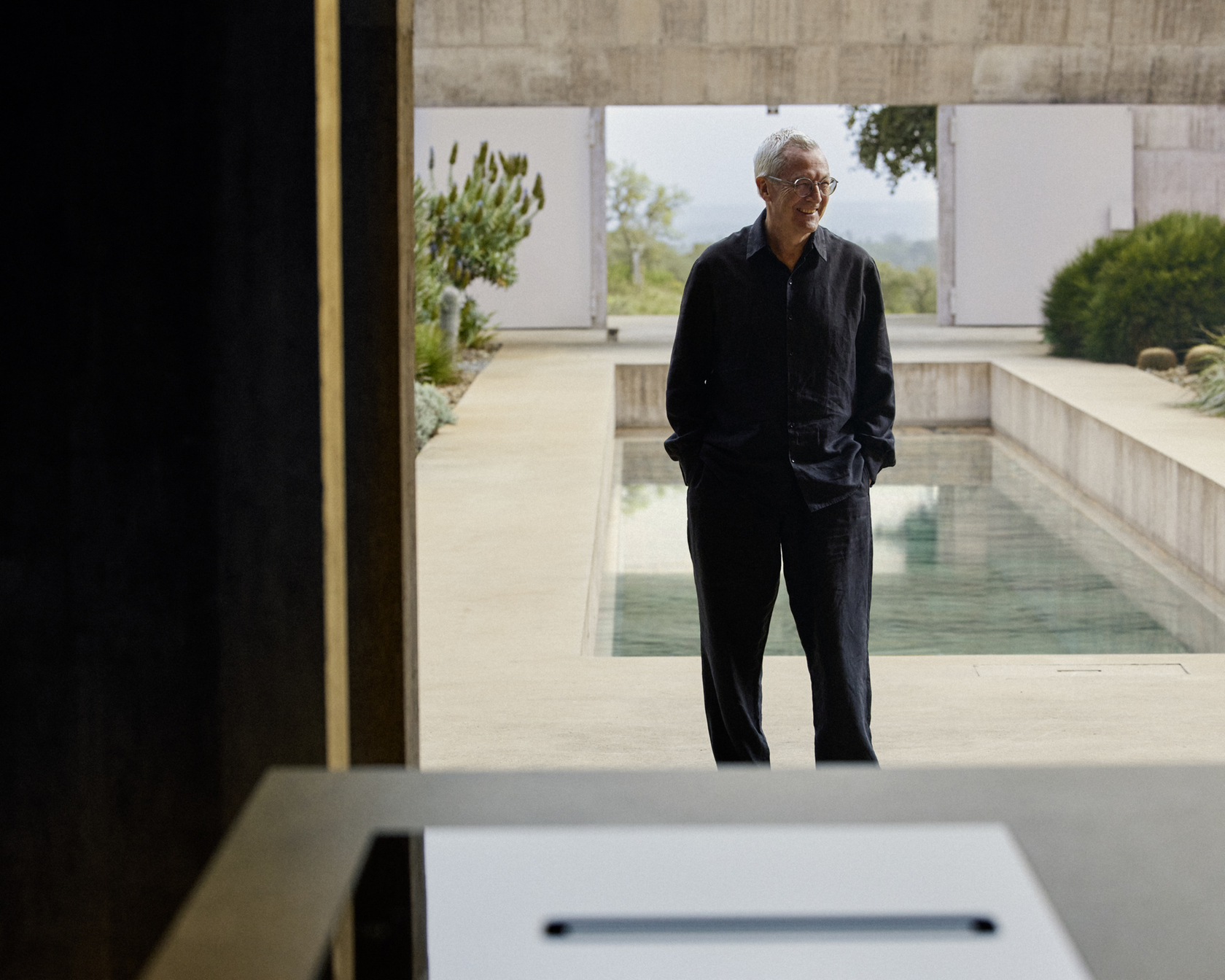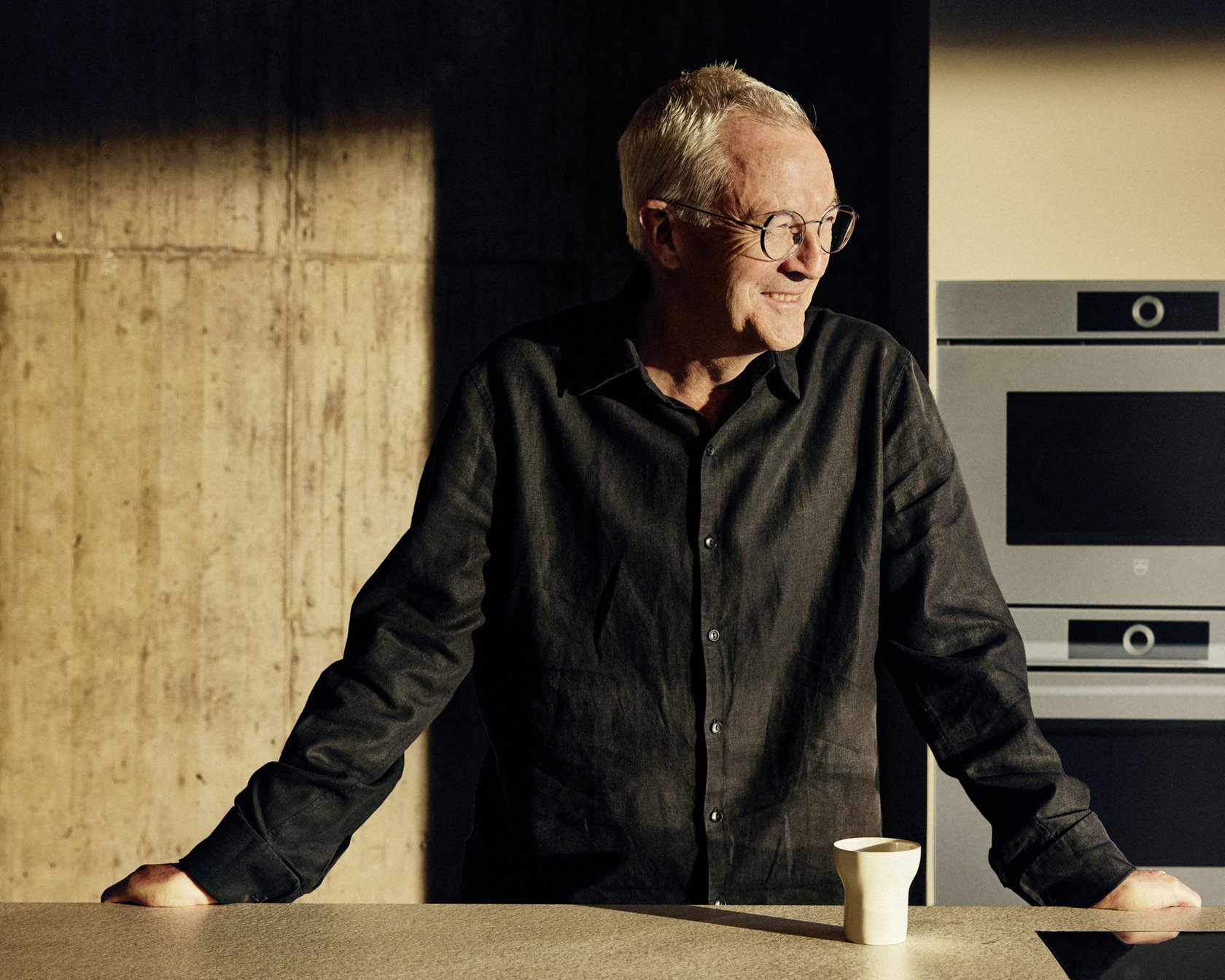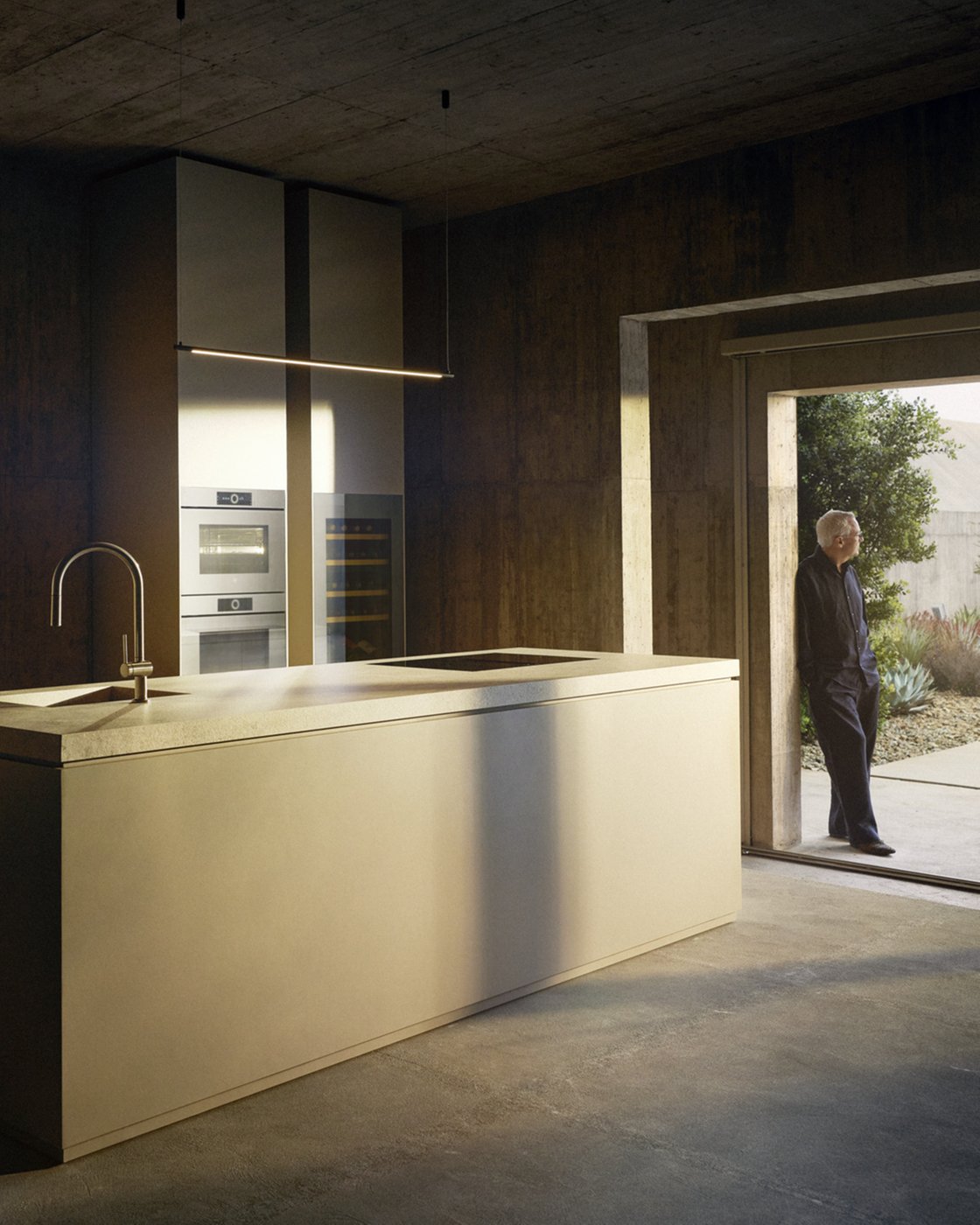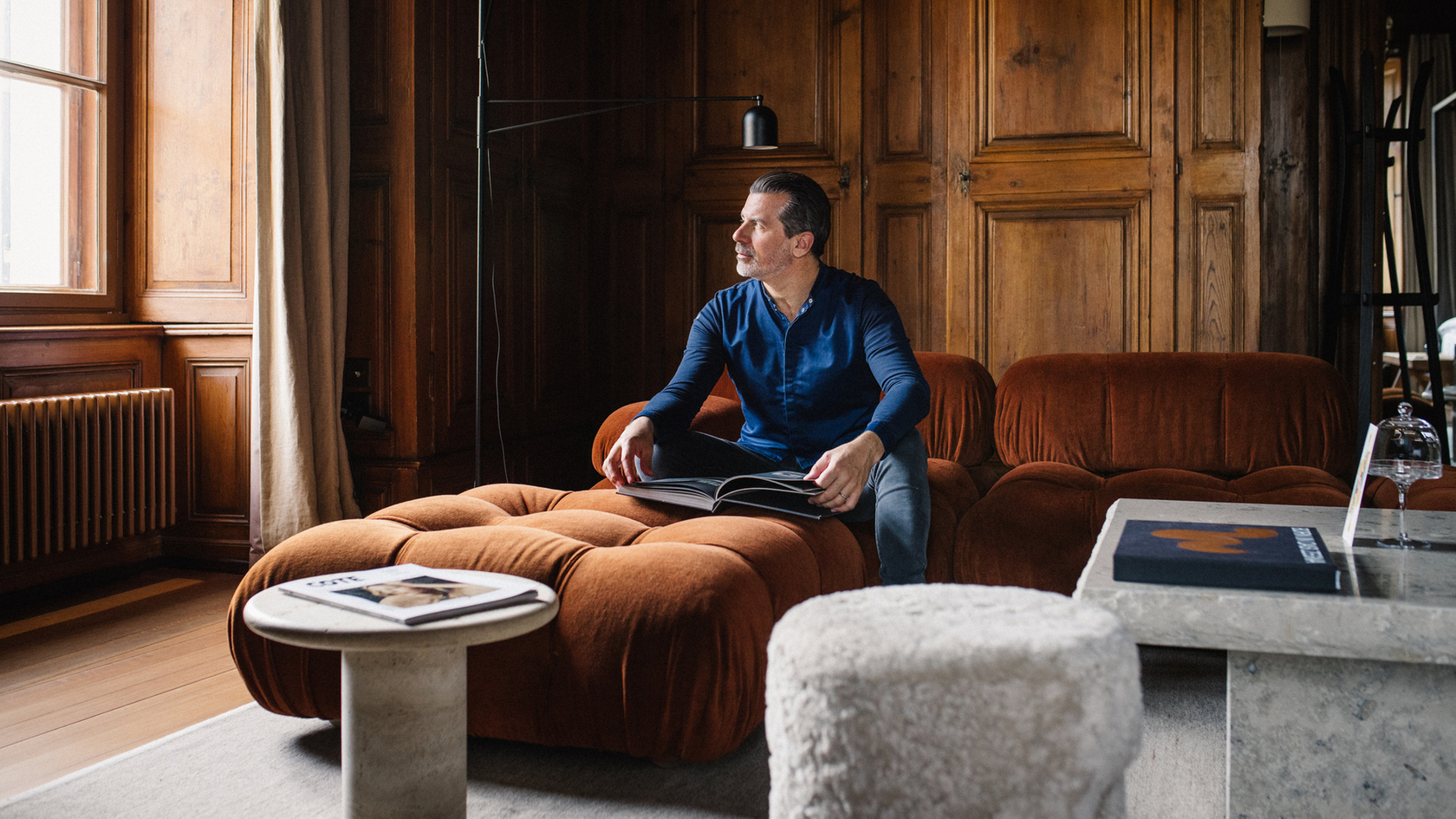Do you sometimes feel lonely?
We are very isolated here, but I like that. We took a conscious decision to live here in this empty landscape. There is no standardisation as a result of social integration. Our house is about ten kilometres from the ocean, nestling among countless cork oaks. There is nothing other than trees and a few sheep. The feeling of solitude is nevertheless constantly diminishing. Portugal is becoming a hot spot. More and more foreigners are building holiday homes here. Five years ago, the closest luxury holiday home was ten kilometres away, now it’s only five. Fortunately, we have a lot of land and will therefore always be alone.
Why did you not want a sea view – that is generally the ultimate wish?
Here in our region, you’re not allowed to construct inside the first few kilometres from the coast, and after that the view of the sea is obscured by silos, roads and barracks. Where we live, the unspoiled horizontal landscape disappears into the unspoiled distance. That’s absolutely wonderful.
How did you first have the idea of building a second home in the Alentejo region?
We searched all around the world, from the Andes to India. Then when we were visiting friends in Alentejo twelve years ago, the penny dropped and I began to design the house even before we had purchased the land.
Your wife is also an architect. Did you plan the Villa Além together?
During the planning stage, we discussed it endlessly. With regard to design issues, I ultimately have the last word while my wife has better ideas concerning business matters. And that was also the case for our house in Portugal.
You are a perfectionist. The Swiss appliance manufacturer, V-ZUG, is also known for its attention to detail. Do you see any parallels?
I strive for perfection in both my thoughts and my actions, and attach little value to design driven by poetry. I also see this attitude in V-ZUG. The shape of a V-ZUG appliance is the very essence of clear thinking. They are precise machines produced consistently and to perfection – they are not merely impressive design objects.
Which kitchen appliances do you use on a daily basis?
We have equipped our kitchen with V-ZUG appliances, including an induction hob, an oven, a dishwasher, a freezer and a wine cabinet.
It’s clear that the kitchen is very important to you. What type of dishes do you prefer cooking?
I prefer Italian dishes. But I also enjoy cooking typical specialities from my homeland, such as Pizzoccheri and Maluns. My wife, on the other hand, is better at preparing fish and meat. I have to confess that her culinary skills are far more sophisticate than my own. Here in Portugal, you can find outstanding products both on the markets and from discount stores – wonderfully aromatic tomatoes, amazingly fresh fish, great vegetables and, of course, black pig. That makes cooking even more enjoyable.
This interview appeared in the Neue Zürcher Zeitung of 19.09.2022.
